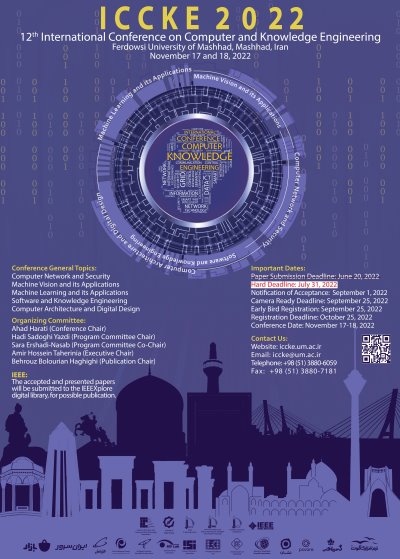0% Complete

Authors :
Keywords :
Abstract :
List of archived papers
Armin Khayati - Mohammad Taheri - Koorush Ziarati
Alireza Ghaemi - Mohammad Zare Ehteshami - Amirhossein Ghaemi
Amirhossein Khajehpour - Farid Zandi - Navid Malekghaini - Mahdi Hemmatyar - Naeimeh Omidvar - Mahdi Jafari Siavoshani
Maryam Kamareh - Mohammad Sadegh Helfroush - Kamran Kazemi
Theophilus Ebuka Odoh - Aliyu Sabo - Hossien Shahinzadeh - Noor Izzri Abdul Wahab - Farshad Ebrahimi
Mohammadreza Asadi - Seyedeh Sogand Hashemi - Mohammad Taghi Sadeghi
Arezoo Rahmati Soltangholi - Ahad Harati - Abedin Vahedian
Mohammad Ali Zarif - Javad Hamidzadeh
Reza Shami Tanha - Mohsen Hooshmand - Mohsen Afsharchi
Shaghayegh Hosseinpour - Mohammad Reza Keyvanpour



